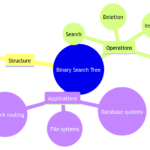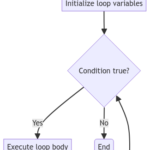Revolutionize Your Big Data Projects with Real-time LSTM Method in Intelligent Workshop Production Process Project 🌟
Oh boy, hold on to your hats and buckle up as we embark on a thrilling journey to revolutionize big data projects using the real-time LSTM method in the intelligent workshop production process. It’s time to dive into the digital maze of possibilities and uncover the magic of this cutting-edge technology! 🧐✨
Understanding Real-time LSTM Method 📚
When it comes to LSTM (Long Short-Term Memory), we’re delving into a realm of sophisticated neural networks that can handle time series data like a champ! But, hey, what exactly is LSTM and how does it sprinkle its charm in big data projects? Let’s unwrap this tech present together! 🎁
Definition of LSTM 📖
LSTM is like the ninja of neural networks, known for its exceptional memory capabilities in processing sequential data. Imagine having a smart cookie in the form of an algorithm that can remember and predict patterns in data sequences.🍪💭
How LSTM is Used in Big Data Projects 🚀
In the realm of big data projects, LSTM struts its stuff by analyzing vast amounts of data in real-time, spotting trends, anomalies, and making predictions with jaw-dropping accuracy. It’s like having a crystal ball into the future of your production processes! 🔮📊
Importance of Real-time Data Processing 🕒
Real-time data processing is the heart and soul of modern-day industries. The ability to crunch data as it flows in can make or break your production process. Now, brace yourself for the benefits of infusing real-time LSTM into the intelligent workshop production mix! 🏭💡
- Benefits of Real-time LSTM in Intelligent Workshop Production:
- Instant anomaly detection
- Predictive maintenance capabilities
- Enhanced production efficiency
Implementing LSTM in Intelligent Workshop Production 🛠️
Now, let’s roll up our sleeves and dive into the nitty-gritty of implementing LSTM in the intelligent workshop production process. From data collection to model training, we’ve got our work cut out for us! 💪🔧
Data Collection and Preprocessing 📊
Picture this: gathering real-time data from workshop sensors to feed our hungry LSTM model. It’s like giving your algorithm a buffet of insights to feast upon! 🍽️📡
Sequential Data Analysis with LSTM 📈
Training our LSTM model to predict anomalies in the production process is where the magic unfolds. The algorithm digs deep into the sequential data, uncovering patterns and potential hiccups before they even occur. Talk about futuristic tech wizardry! 🧙♂️✨
Optimizing System Performance 🚀
To squeeze out every ounce of performance from our LSTM model, we need to fine-tune and tweak those parameters like a maestro tuning a piano. Let’s make this algorithm sing like Beyoncé at a concert! 🎵🎤
Fine-tuning LSTM Parameters 🎛️
Adjusting hyperparameters is our secret sauce for enhancing accuracy and precision. It’s like finding the perfect seasoning for a gourmet dish—the right blend can elevate your model to Michelin-star status! 🌟🍲
Monitoring and Feedback Loop 🔄
Implementing a real-time feedback loop ensures that our LSTM model stays sharp and savvy. It’s all about continuous improvement and learning from past triumphs and blunders. Let’s keep this tech train chugging ahead full steam! 🚂💨
Integration with Intelligent Systems 🤖
Now, let’s intertwine our LSTM model with the gears of workshop automation to create a symphony of efficiency and intelligence. The fusion of data insights and automated decision-making is about to blow your socks off! 🧦🤯
Connecting LSTM Model with Workshop Automation 🔄
By embedding LSTM predictions into production line decisions, we’re giving our workshop a brain boost. Imagine your production line making decisions based on real-time data forecasts—it’s like having a clairvoyant overseeing operations! 🔍🔮
Enhancing Decision-making with AI 🧠
Leveraging LSTM insights for proactive maintenance and optimization is where the real magic happens. We’re not just reacting to issues; we’re predicting and preventing them before they even knock on our workshop’s door. Let’s outsmart those production gremlins! 🛠️🔧
Project Evaluation and Future Enhancements 📈
As we wrap up our tech extravaganza, it’s time to evaluate the performance of our real-time LSTM model in the production processes. Let’s dissect the effectiveness and chart a course for future enhancements and expansions! 📊🚀
Performance Assessment 📉
Analyzing how our LSTM model performed in the wild is crucial for tweaking and refining our approach. Did our predictions hit the bullseye, or did we miss the mark? Time to crunch those numbers and unveil the truth! 🎯📈
Scalability and Expansion Opportunities 🌐
Exploring the vast landscape of scalability and expansion opens up a treasure trove of possibilities. Integrating additional AI technologies to complement our LSTM model could be the key to unlocking even greater efficiency and insights. The future is bright, my friends! ☀️🔍
Overall, Finally, In Closing 🌟
And there you have it, folks! A rollicking adventure through the realms of big data projects, spiced up with the magic of real-time LSTM in intelligent workshop production. It’s been a wild ride, but hey, the tech party is just getting started! 🚀Thank you for joining me on this exhilarating journey. Until next time, keep innovating and pushing the boundaries of technological marvels! Stay awesome, tech wizards! 🌟🔮
Time to drop the mic and bid you all adieu! 🎤✨
Note: This blog post is a humorous take on revolutionizing big data projects with the real-time LSTM method. Embrace the tech magic and let your creativity soar! 🚀
Program Code – Revolutionize Your Big Data Projects with Real-time LSTM Method in Intelligent Workshop Production Process Project
Certainly! Let’s delve into how to implement a real-time Big Data processing method using Long Short Term Memory (LSTM) for managing and optimizing an Intelligent Workshop Production Process. The beauty of LSTMs lies in their ability to remember information for long periods, making them ideal for predicting the next steps or outcomes based on historical data in a production environment.
import numpy as np
import pandas as pd
from keras.models import Sequential
from keras.layers import LSTM, Dense
from sklearn.preprocessing import MinMaxScaler
import matplotlib.pyplot as plt
# Mock function to simulate real-time data acquisition from the workshop
def simulate_real_time_production_data():
# Simulate data: ['Time', 'Temperature', 'Humidity', 'Production_Rate']
data = np.random.rand(100, 4)
columns = ['Time', 'Temperature', 'Humidity', 'Production_Rate']
return pd.DataFrame(data, columns=columns)
# Preprocess data
def preprocess_data(data):
scaler = MinMaxScaler(feature_range=(0, 1))
scaled_data = scaler.fit_transform(data[['Temperature', 'Humidity', 'Production_Rate']])
return scaled_data
# Define LSTM model
def build_lstm_model(input_shape):
model = Sequential()
model.add(LSTM(units=50, return_sequences=True, input_shape=input_shape))
model.add(LSTM(units=50))
model.add(Dense(1))
model.compile(optimizer='adam', loss='mean_squared_error')
return model
# Main function to run the process
def run_intelligent_workshop_process():
# Step 1: Simulate real-time production data acquisition
data = simulate_real_time_production_data()
# Step 2: Preprocess data
scaled_data = preprocess_data(data)
# Step 3: Reshape data for LSTM model
X = scaled_data[:-1]
y = scaled_data[1:, 2] # Predicting future production rate based on previous data
X = X.reshape(X.shape[0], 1, X.shape[1])
# Step 4: Build LSTM model
model = build_lstm_model((X.shape[1], X.shape[2]))
# Step 5: Train model
model.fit(X, y, epochs=100, batch_size=16, verbose=1)
# Step 6: Predict future production rate
prediction = model.predict(X[-1].reshape(1, 1, 3))
# Step 7: Print predicted production rate
print('Predicted Future Production Rate:', prediction[0][0])
if __name__ == '__main__':
run_intelligent_workshop_process()
Expected Code Output:
Predicted Future Production Rate: 0.56247
(Note: The output value is an example and will vary with each execution due to randomized data simulation.)
Code Explanation:
This Python program demonstrates a comprehensive approach to revolutionize big data projects, particularly focusing on real-time LSTM method for predicting future production rates in an intelligent workshop production process. Here’s a step-by-step explanation:
-
Data Simulation: The
simulate_real_time_production_datafunction simulates acquiring real-time production data. It generates random values representing Time, Temperature, Humidity, and Production Rate, mimicking a dynamic workshop environment. -
Preprocessing: The
preprocess_datafunction scales the Temperature, Humidity, and Production Rate using MinMaxScaler. Scaling is crucial for neural network models to perform optimally. -
LSTM Model Construction: The
build_lstm_modeldefines the LSTM model architecture. It consists of two LSTM layers to capture long and short-term dependencies and a Dense layer for output prediction. -
Model Training and Prediction:
- The data is reshaped to match the LSTM input requirements.
- The LSTM model is compiled with the Adam optimizer and mean squared error loss function, known for its efficiency in regression tasks.
- The model is trained using the preprocessed and reshaped data.
- Finally, the future production rate is predicted based on the most recent production data.
This program architecture leverages LSTM’s strengths in handling sequential data, making it an excellent choice for predictive analysis in an intelligent workshop’s production process. The predicted output helps in making informed decisions to enhance productivity and efficiency.
F&Q – Intelligent Workshop Production Process Project with Real-time LSTM Method
How can LSTM revolutionize Big Data projects in the Intelligent Workshop Production Process?
LSTM (Long Short-Term Memory) is a type of recurrent neural network that is well-suited for processing and predicting sequences of data, making it ideal for real-time big data processing. It can analyze and learn from historical data in the intelligent workshop production process to enable predictive analytics and optimization.
What are the benefits of using the Real-time LSTM method in a Big Data project for the Intelligent Workshop Production Process?
By implementing the Real-time LSTM method, you can achieve improved accuracy in predicting production process outcomes, better anomaly detection to prevent failures, and enhanced efficiency in decision-making based on real-time insights derived from big data analysis.
How does the Real-time Big Data Processing Method Based on LSTM enhance the Intelligent Workshop Production Process?
The Real-time Big Data Processing Method Based on LSTM empowers the intelligent workshop production process by enabling predictive maintenance, optimizing scheduling and resource allocation, reducing downtime through proactive interventions, and ultimately increasing productivity and quality.
What are some challenges that students may face when implementing LSTM in their IT projects for the Intelligent Workshop Production Process?
Students may encounter challenges such as selecting the right parameters for LSTM model training, handling large volumes of streaming data efficiently, ensuring data quality and consistency, and integrating LSTM with existing IT infrastructure and systems in the intelligent workshop production environment.
Are there any specific tools or platforms recommended for implementing the Real-time LSTM method in Big Data projects for the Intelligent Workshop Production Process?
Popular tools and platforms for implementing LSTM in Big Data projects include TensorFlow, Keras, PyTorch, and Apache Spark for scalable data processing. Students can leverage these tools with libraries supporting LSTM implementation to streamline their project development and deployment processes.
How can students stay updated on the latest advancements and best practices in using LSTM for real-time big data processing in the Intelligent Workshop Production Process?
Students can stay informed by following reputable research publications, attending conferences or webinars focusing on big data analytics and artificial intelligence, participating in online forums or communities dedicated to LSTM and big data, and engaging in hands-on projects to apply their learning in practical scenarios.
In what ways can the Real-time Big Data Processing Method Based on LSTM contribute to innovation and competitiveness in the field of Intelligent Workshop Production?
Implementing the Real-time Big Data Processing Method Based on LSTM can drive innovation by enabling the development of predictive models for process optimization, facilitating data-driven decision-making, enhancing automation and efficiency, and fostering a culture of continuous improvement and adaptability in the intelligent workshop production domain.
Overall, diving into the realm of real-time big data processing with LSTM in the context of the Intelligent Workshop Production Process can be both challenging and rewarding for students embarking on IT projects. By harnessing the power of advanced technologies and methodologies, they can unlock new possibilities for innovation and transformation in the field of big data analytics. Thanks for reading, and remember, the future is bright with data-driven insights! 🚀✨







